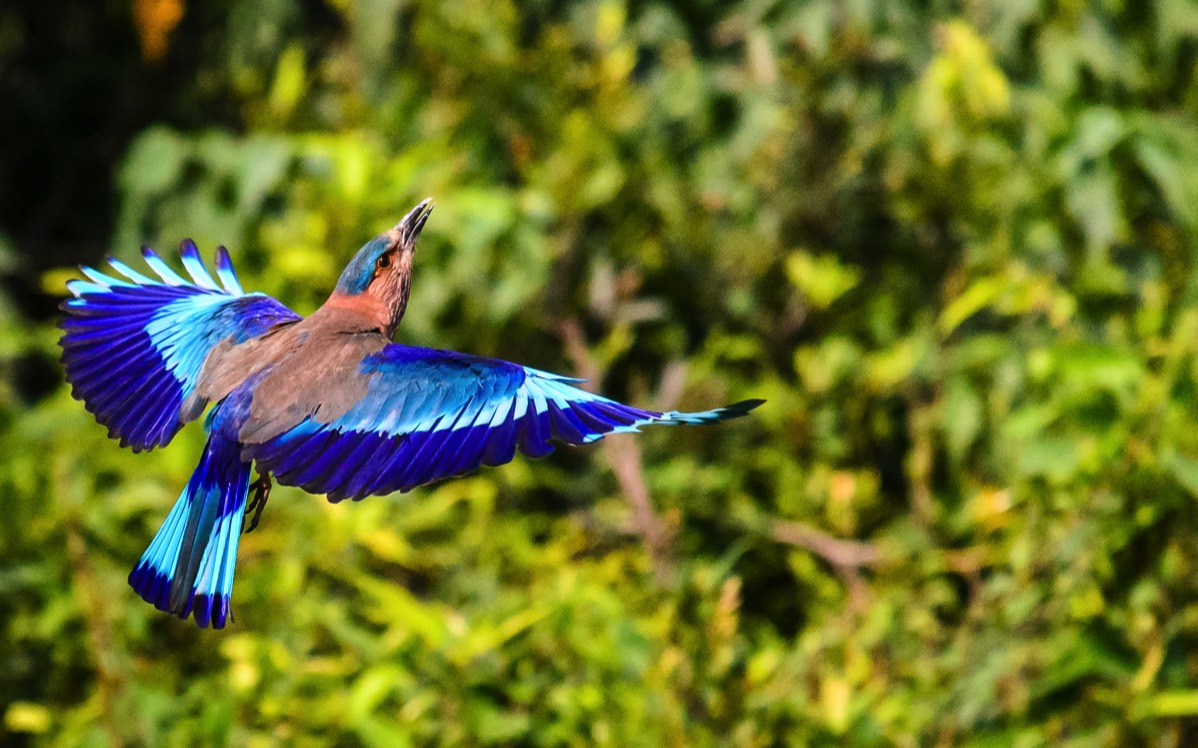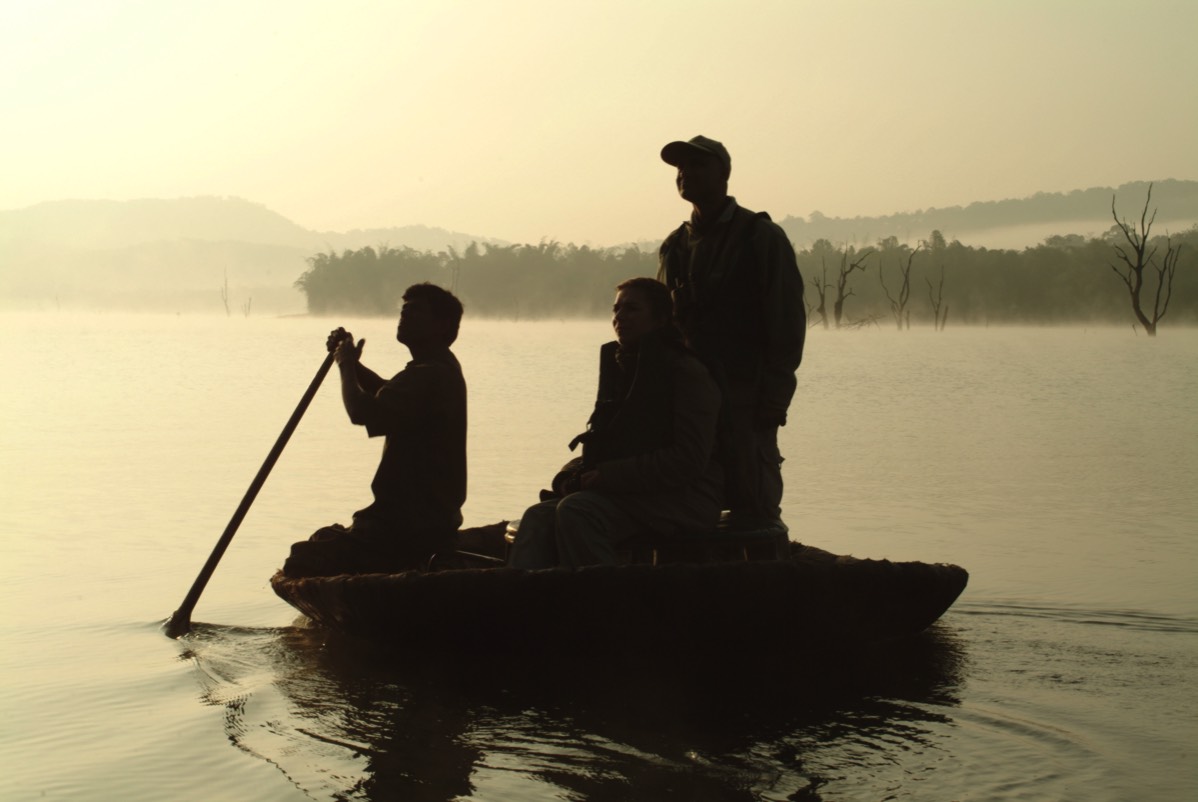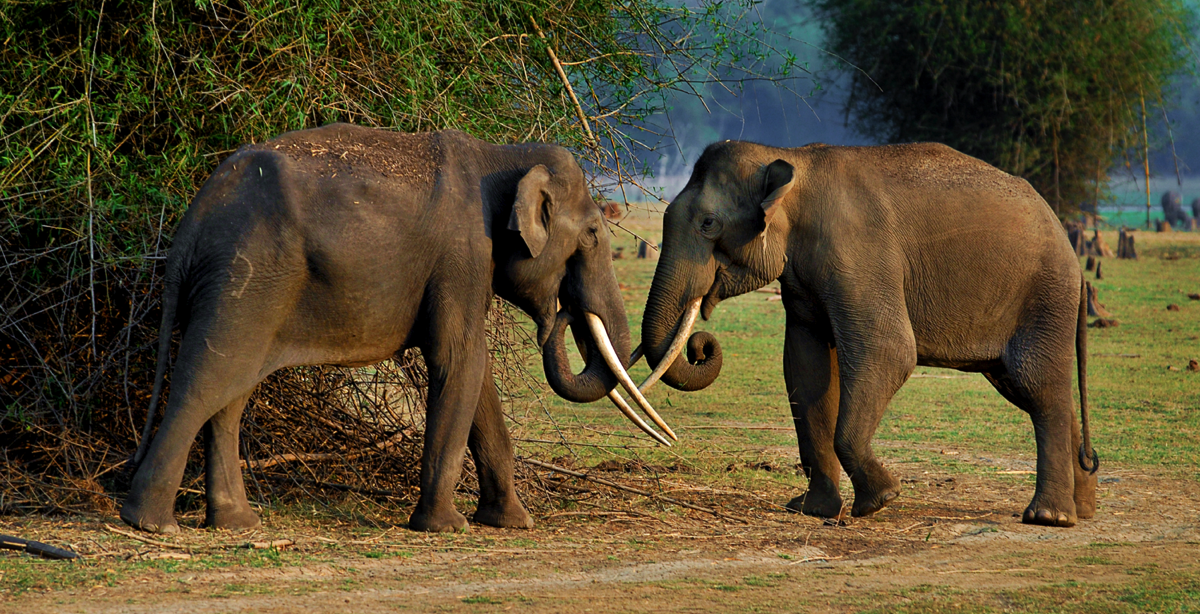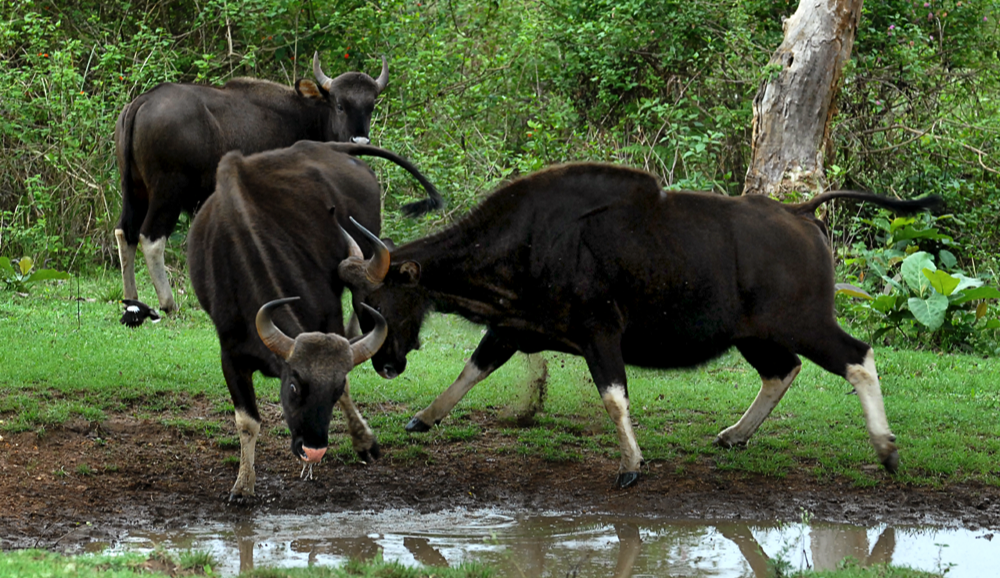TRAVEL
Surrey’s Premier Lifestyle Magazine
Wildlife and wanderlust
India’s Karnataka state is full of variety and diversity and in 2016 celebrates its formation 60 years ago. The mandarins of Karnataka Tourism were convinced that to attract international travellers they couldn’t stay with just two traditional attractions. Subhasish Chakraborty goes wild to look at the changes made.
Photo copyright: All images (except where noted) copyright Orange County Resorts & Hotels Ltd.
Below Photo copyright: Amreshm | Dreamstime.com
Photo copyright: All images (except where noted) copyright Orange County Resorts & Hotels Ltd.
Below Photo copyright: Amreshm | Dreamstime.com

Until recently, Karnataka in south west India had two pivotal attractions: India’s Silicon Valley (‘Silicon Plateau’), Bangalore and the princely Mysore. Now a third attraction, wildlife and nature-based tourism, has been developed enabling the stressed out IT whizz kids of Bangalore to get much-needed r&r in nature’s lap.
Karnataka Tourism Department was the catalyst and the private sector hospitality industry followed, investing in developing the tourist infrastructure in some of Karnataka’s virgin wildlife sanctuaries. The result? Karnataka today boasts some of India’s best wildlife resorts, attracting travellers from around the globe and winning accolades from the international hospitality industry.
My first brush with Karnataka’s wealth of wildlife, its flora and fauna, as well as the incredible Nilgiri Biosphere Reserve, began with a chance to visit the world famous Kabini Wildlife Sanctuary as a scriptwriter for a UK wildlife conservation trust there to make a documentary film. The crew arrived in Delhi from where I accompanied them on an early morning flight to Bangalore, and on by coach to Kabini’s pride: the magnificent Orange County Resort.
The drive from Bangalore along the Mysore Highway shows the full beauty of the Karnatakan countryside. The resort is situated on the edges of Bheeramballi village, in acres of agricultural land. A shimmering river attracts hundreds of bird species and fascinating tribal hamlets of the exotic Kuruba tribe welcome visitors as honoured guests to the area.
Karnataka Tourism Department was the catalyst and the private sector hospitality industry followed, investing in developing the tourist infrastructure in some of Karnataka’s virgin wildlife sanctuaries. The result? Karnataka today boasts some of India’s best wildlife resorts, attracting travellers from around the globe and winning accolades from the international hospitality industry.
My first brush with Karnataka’s wealth of wildlife, its flora and fauna, as well as the incredible Nilgiri Biosphere Reserve, began with a chance to visit the world famous Kabini Wildlife Sanctuary as a scriptwriter for a UK wildlife conservation trust there to make a documentary film. The crew arrived in Delhi from where I accompanied them on an early morning flight to Bangalore, and on by coach to Kabini’s pride: the magnificent Orange County Resort.
The drive from Bangalore along the Mysore Highway shows the full beauty of the Karnatakan countryside. The resort is situated on the edges of Bheeramballi village, in acres of agricultural land. A shimmering river attracts hundreds of bird species and fascinating tribal hamlets of the exotic Kuruba tribe welcome visitors as honoured guests to the area.

Coracle on Kabini River
The resort’s architecture is entirely sympathetic to local tribal sensitivities and replicates the age-old architectural heritage of the ‘Kadu Kuruba’ tribes. Antique wooden furnishings, curtains and the overall ambience of each room reverberate with a rustic charm. Be it the ethnically designed ‘pool huts’ or the luxurious ‘jacuzzi huts’, the resort is a supreme reflection of local conditions. Attention has been concentrated on creating art, as if one beautiful picture.
Surrounded by tribal designs both unusual and minimalist – designs that celebrate heritage and do not necessarily conform to any set pattern, finishes that are playful – reflect the joy this resort breathes into its living spaces. Be it the floors, walls, ceilings, doors or even the simple framed windows, the resort manages to evoke vibrancy in the most mundane surroundings and happiness that reaches out to embrace the moment a visitor steps inside.
Adrian Murphy, the experienced crew leader of the trust, hadn’t seen a resort like it before and he’d been on several safari tours in Africa. In the course of our dinner with the lights dimmed, the candles aglow, a cosy dinner served, Adrian emotionally remarked: “I feel architects tend to design interiors that are austere – decorators on the other hand produce interiors that are dramatic, often with no sense of discipline. Here though, the synthesis has been perfect, stunning and a dignified showcase that exudes an aura of ease.”
From the quietly refined, comfortable residence, free of clutter and ostentation, we began our mission of unravelling the mysteries of the Nilgiri Biosphere. We were provided with a specially designed vehicle and expert naturalist named Manjunath, who would double up as a driver. As our vehicle meandered past the resort and hit the dirt road leading to the mecca of wildlife sanctuaries, Nagarhole National Park, a sense of euphoria engulfed the group.
As it turned out, our naturalist cum driver turned out to be a very knowledgeable companion and he would briefly halt at places favoured by tigers and leopards. On one occasion, he parked the vehicle on a grazing ground, apparently the favourite haunt of the wild elephants of Nagarhole. More than half an hour went and there was no sign of any elephants. A few members of the crew became restless and wanted to go on, but not Manjunath. He was sure the elephants would make an appearance and they did!
Surrounded by tribal designs both unusual and minimalist – designs that celebrate heritage and do not necessarily conform to any set pattern, finishes that are playful – reflect the joy this resort breathes into its living spaces. Be it the floors, walls, ceilings, doors or even the simple framed windows, the resort manages to evoke vibrancy in the most mundane surroundings and happiness that reaches out to embrace the moment a visitor steps inside.
Adrian Murphy, the experienced crew leader of the trust, hadn’t seen a resort like it before and he’d been on several safari tours in Africa. In the course of our dinner with the lights dimmed, the candles aglow, a cosy dinner served, Adrian emotionally remarked: “I feel architects tend to design interiors that are austere – decorators on the other hand produce interiors that are dramatic, often with no sense of discipline. Here though, the synthesis has been perfect, stunning and a dignified showcase that exudes an aura of ease.”
From the quietly refined, comfortable residence, free of clutter and ostentation, we began our mission of unravelling the mysteries of the Nilgiri Biosphere. We were provided with a specially designed vehicle and expert naturalist named Manjunath, who would double up as a driver. As our vehicle meandered past the resort and hit the dirt road leading to the mecca of wildlife sanctuaries, Nagarhole National Park, a sense of euphoria engulfed the group.
As it turned out, our naturalist cum driver turned out to be a very knowledgeable companion and he would briefly halt at places favoured by tigers and leopards. On one occasion, he parked the vehicle on a grazing ground, apparently the favourite haunt of the wild elephants of Nagarhole. More than half an hour went and there was no sign of any elephants. A few members of the crew became restless and wanted to go on, but not Manjunath. He was sure the elephants would make an appearance and they did!

Tusker elephants
A herd of about 45 elephants with calves were retreating along the forest trail. At a distance, we could see the southwestward movement of the elephants being barred by a small contingent of staff from the Wildlife Wing. What was peculiar was the herd had left behind two calves which could not keep up with adult members as their energy flagged. More amazing was that the herd didn’t take the abandoned calves back. In a last ditch effort to reunite the calves, they were thoroughly smeared with fresh dung so they would assume a new smell and identity and thus be accepted again. Alas, the elephants were not to be fooled; only a huge one smelt them, rested its trunk for some time on one of the calves and moved slowly to allow them to keep up. But the calves weakened and were finally left alone. Unfortunately, one of the calves died the next day of calcium deficiency; the entire unfolding sadness captured on camera.
Our spirits down, we proceeded until the forest cover became dense. Manjunath informed us that Nagarhole harbours one of the highest concentrations of wildlife species in India, around 108 animals per square kilometre.
Deep inside the forest (we must have travelled a good 15 kilometres), the more frequent were our halts to film. The crew was elated with exclusive shots of Muntjaks, the Four-Horned Antelope, Langurs and even the Bonnet Macaque, but crestfallen at not having seen a big cat! The summer months are usually ideal for viewing tigers as Manjunath informed us.
Nonetheless, we spent each day filming with a great sense of achievement. Of course, the intermittent rain made our progress a little slower than anticipated, but the Orange County Resort staff were always at hand to provide for us: from weatherproof raincoats to hi-tech binoculars, from coordinating with National Park authorities to information on the latest tiger count census, they were exemplary.
Some days we’d return by mid afternoon and after grabbing lunch would get busy editing on site. We were provided with a private room, large enough to accommodate the entire crew with equipment. The resort’s other 20 guests were mostly IT professionals from Bangalore who have made it a habit of spending weekends at Kabini.
Our spirits down, we proceeded until the forest cover became dense. Manjunath informed us that Nagarhole harbours one of the highest concentrations of wildlife species in India, around 108 animals per square kilometre.
Deep inside the forest (we must have travelled a good 15 kilometres), the more frequent were our halts to film. The crew was elated with exclusive shots of Muntjaks, the Four-Horned Antelope, Langurs and even the Bonnet Macaque, but crestfallen at not having seen a big cat! The summer months are usually ideal for viewing tigers as Manjunath informed us.
Nonetheless, we spent each day filming with a great sense of achievement. Of course, the intermittent rain made our progress a little slower than anticipated, but the Orange County Resort staff were always at hand to provide for us: from weatherproof raincoats to hi-tech binoculars, from coordinating with National Park authorities to information on the latest tiger count census, they were exemplary.
Some days we’d return by mid afternoon and after grabbing lunch would get busy editing on site. We were provided with a private room, large enough to accommodate the entire crew with equipment. The resort’s other 20 guests were mostly IT professionals from Bangalore who have made it a habit of spending weekends at Kabini.
Some of the more mature guests were so interested by the filming and editing activity that they postponed their departure dates just to be with the crew, seemingly more interested in the progress of our work than their own personal encounters.
For entertainment, the resort organised evening folk dance performances with native Kuruba tribal dancers.
Manjunath, our jovial guide cum naturalist, had done an admirable job showing us the secret corners of the park and invited the entire crew for an impromptu tea session. Five of us went on a walking tour to his village and this provided an opportunity to talk with the elders who shared aspects of their rich heritage and culture. They took immense pride in their ancestors who were the first original inhabitants of this rugged jungle and were reportedly hunters. The chief naturalist, Mr Nanjappa, explained that the resort has been pioneering the process of integration with the tribal Kurubas by way of providing employment and training in wildlife conservation.
Towards the end of our tour, we had enough spare time to go bird watching and visit the tribal village of Bheerambali. There is a huge diversity of bird species in the area that few national parks in India can match. 350 species are known to thrive in the marshy areas of Kabini and two of the crew, John and Abraham from far away Nottingham, both avid bird watchers, were in their element noting the Blue-bearded bee-eater, the Malabar Trogon, Crested serpent-eagle, Crested hawk-eagle, Changeable Hawk Eagle, Indian Roller, Indian reed, Woodpeckers: this list went on.
As a travel writer born and brought up in the north-eastern state of Assam, I was exposed from an early age to the grandeur and wilderness of the world famous Kaziranga National Park. Every now and then India comes up with surprises even for me and this resort offers a harmonious amalgamation of the traditional tribal with the contemporary.
As human beings we love being amazed by the magician, the astrologer, the faith healer. Out here in Kabini prepare yourself to be challenged; I can assure you the stimuli here are all positive.
For entertainment, the resort organised evening folk dance performances with native Kuruba tribal dancers.
Manjunath, our jovial guide cum naturalist, had done an admirable job showing us the secret corners of the park and invited the entire crew for an impromptu tea session. Five of us went on a walking tour to his village and this provided an opportunity to talk with the elders who shared aspects of their rich heritage and culture. They took immense pride in their ancestors who were the first original inhabitants of this rugged jungle and were reportedly hunters. The chief naturalist, Mr Nanjappa, explained that the resort has been pioneering the process of integration with the tribal Kurubas by way of providing employment and training in wildlife conservation.
Towards the end of our tour, we had enough spare time to go bird watching and visit the tribal village of Bheerambali. There is a huge diversity of bird species in the area that few national parks in India can match. 350 species are known to thrive in the marshy areas of Kabini and two of the crew, John and Abraham from far away Nottingham, both avid bird watchers, were in their element noting the Blue-bearded bee-eater, the Malabar Trogon, Crested serpent-eagle, Crested hawk-eagle, Changeable Hawk Eagle, Indian Roller, Indian reed, Woodpeckers: this list went on.
As a travel writer born and brought up in the north-eastern state of Assam, I was exposed from an early age to the grandeur and wilderness of the world famous Kaziranga National Park. Every now and then India comes up with surprises even for me and this resort offers a harmonious amalgamation of the traditional tribal with the contemporary.
As human beings we love being amazed by the magician, the astrologer, the faith healer. Out here in Kabini prepare yourself to be challenged; I can assure you the stimuli here are all positive.

Indian Gaur
Traveller’s factfile:
Getting there: Orange County, Kabini is located approximately 245 kilometres from Bangalore by road. Travel via Mysore on the Mysore Highway via places such as Ramnagaram – Maddur – Mandya – Srirangapatna.Bangalore is well connected by air and rail. All the leading domestic airlines, Jet Airways, Kingfisher, Spice Jet, Jet Lite and Paramount Airways, operate routine flights to Bangalore from some of India’s major cities such as Delhi, Mumbai, Kolkata, Chennai and Hyderabad.
International airlines such as Air France, British Airways, Gulf Air, KLM Northwest, Lufthansa, Malaysian Airlines, Royal Nepal Airlines, Singapore Airlines and Sri Lanka Airlines operate routine flights to Bangalore from major international aviation hubs.
My first brush with Karnataka’s wealth of wildlife, its flora and fauna, as well as the incredible Nilgiri Biosphere Reserve, began with a chance to visit the world famous Kabini Wildlife Sanctuary as a scriptwriter for a UK wildlife conservation trust there to make a documentary film.



